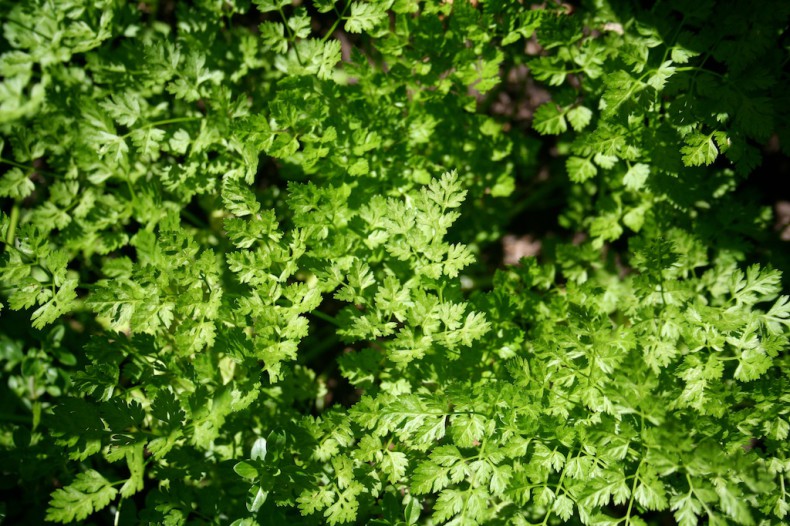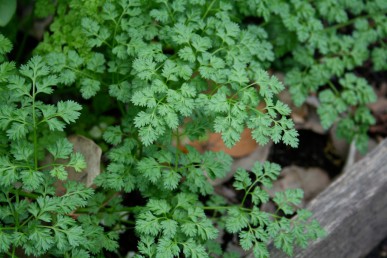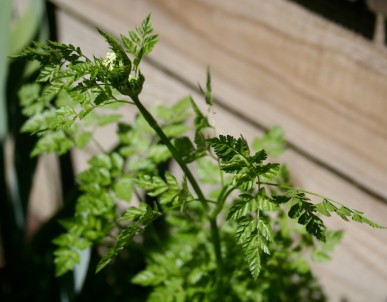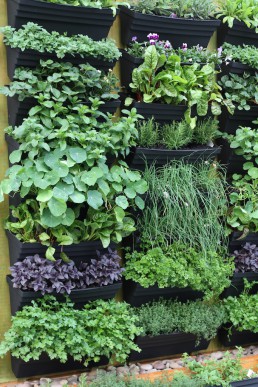If you haven’t planted your chervil yet, now is a good time to do so. Chervil, Anthriscus cerefolium, is a soft, tender annual herb with dainty, bright green, fern-like leaves and tiny white flowers in umbrella shaped heads. Flowers are followed by long thin black seeds. The leaves have a sweet anise flavour. Plants grow to about 40cm high and 30cm across and you can start harvesting leaves about 5 weeks after sowing seed.
Chervil thrives in cooler climates and prefers a semi-shaded position in humus-rich soil with plenty of water during hot dry weather. Under a deciduous trees is a good position because it will get shade in summer but sun in winter. If you are worried about it having to compete with the tree for nutrients, then plant it in a pot. Chervil does not like to be transplanted so grow it from seed sown where it is to grow in autumn or early spring. In humid regions plant in autumn. Seed must be fresh as it doesn’t doesn’t stay fertile for long. Also soil needs to be kept moist but not too wet. Leaves turn red and plants can die when they get too much sun or dry out.
Once you’ve got used to using chervil, you will probably want to grow it all year round so sow seeds every couple of months to ensure a regular supply.
The subtle anise flavour combines beautifully with chives, parsley and tarragon to make the classic French combination known as fines herbes. This is used with sauces, eggs and grilled meat and fish. But its also delicious on its own added to an omelette or stirred into ricotta cheese and eaten on a biscuit.




